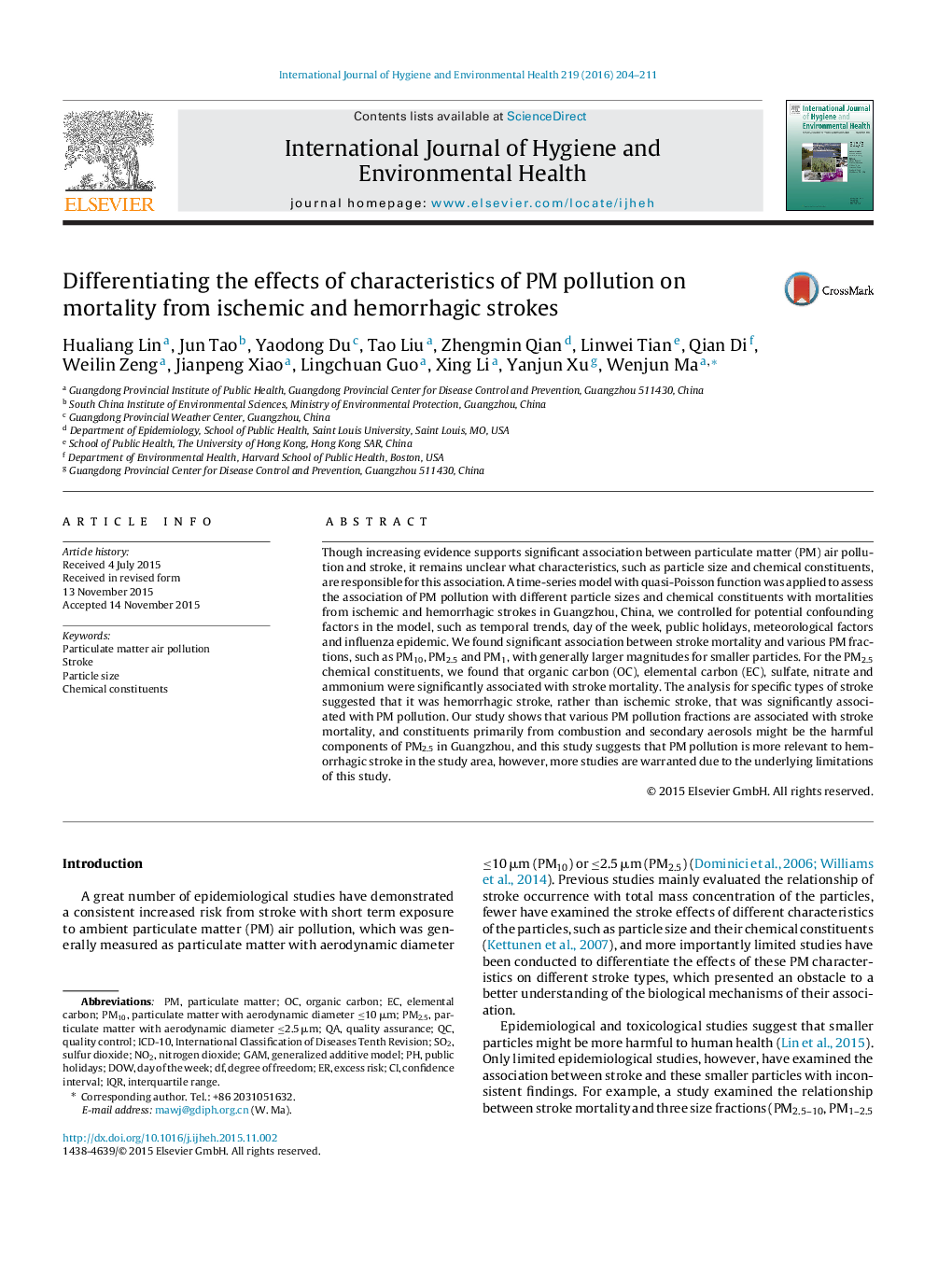| Article ID | Journal | Published Year | Pages | File Type |
|---|---|---|---|---|
| 2588415 | International Journal of Hygiene and Environmental Health | 2016 | 8 Pages |
Though increasing evidence supports significant association between particulate matter (PM) air pollution and stroke, it remains unclear what characteristics, such as particle size and chemical constituents, are responsible for this association. A time-series model with quasi-Poisson function was applied to assess the association of PM pollution with different particle sizes and chemical constituents with mortalities from ischemic and hemorrhagic strokes in Guangzhou, China, we controlled for potential confounding factors in the model, such as temporal trends, day of the week, public holidays, meteorological factors and influenza epidemic. We found significant association between stroke mortality and various PM fractions, such as PM10, PM2.5 and PM1, with generally larger magnitudes for smaller particles. For the PM2.5 chemical constituents, we found that organic carbon (OC), elemental carbon (EC), sulfate, nitrate and ammonium were significantly associated with stroke mortality. The analysis for specific types of stroke suggested that it was hemorrhagic stroke, rather than ischemic stroke, that was significantly associated with PM pollution. Our study shows that various PM pollution fractions are associated with stroke mortality, and constituents primarily from combustion and secondary aerosols might be the harmful components of PM2.5 in Guangzhou, and this study suggests that PM pollution is more relevant to hemorrhagic stroke in the study area, however, more studies are warranted due to the underlying limitations of this study.
